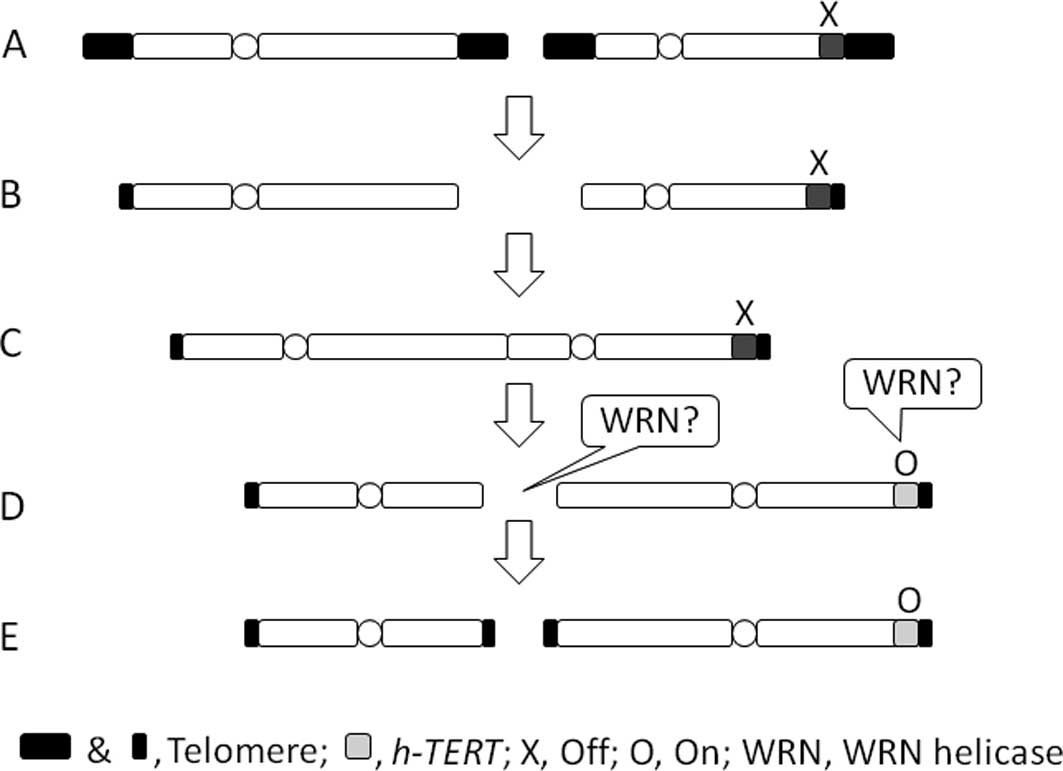Involvement of WRN helicase in immortalization and tumorigenesis by the telomeric crisis pathway (Review)
- Authors:
- Published online on: May 6, 2011 https://doi.org/10.3892/ol.2011.298
- Pages: 609-611
Metrics: Total
Views: 0 (Spandidos Publications: | PMC Statistics: )
Total PDF Downloads: 0 (Spandidos Publications: | PMC Statistics: )
Abstract
The repeated replication of cells shortens telomeres, culminating in their instability, after which most cells cease to replicate and die. However, a small fraction of the cells become immortalized by maintaining telomeres with activated telomerase activity. It has been proposed that WRN helicase encoded by the WRN gene, the causative gene of Werner syndrome (WS), is required for immortalization by the telomeric crisis pathway (TCP) in a system that uses lymphoblastoid cell lines transformed by the Epstein-Barr virus. Taken together, these characteristics indicate that WRN helicase is also required for the immortalization of epithelial cells by TCP and consequent carcinogenesis, suggesting that the tumorigenesis of epithelial cells by TCP is suppressed in WS lacking the WRN helicase function. Notably, in WS the pathway of alternative lengthening of telomeres without activation of telomerase activity has been suggested to be involved in immortalization and tumorigenesis. This factor is consistent with the abundance of non-epithelial cancers in WS in that the ratio of epithelial to non-epithelial cancers is approximately 1:1 in WS patients compared to 10:1 in the general population. A hypothetical scheme showing the role of WRN helicase in immortalization by means of the supposed ‘breakage-fusion-bridge cycle’ of chromosomes at telomeric crisis is described.










